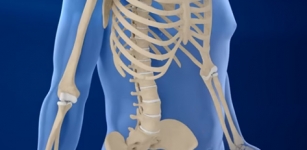Healthy Eating

You have probably heard people saying it’s important to eat a good balanced diet. It’s essential for helping you become a strong and healthy adult
Five a day
We should all be eating at least five portions of fruit and vegetables a day as part of a healthy lifestyle. (One portion in 2 small fruit such as Kiwi, Plum, half slice of melon et or to be precise 80 grams)
Try to get into the routine of eating a fruit snack in the morning, plus a eating of veg salad and a piece of fruit for both lunch and your evening meal.
You could even try tinned fruit as long as it’s in juice and not syrup or dried fruit like apricots, sultanas, raisins, apples and pears
More healthy snacks
Try replacing snacks with high sugar/fat/salt content with healthier options like fruit, oatcakes and breadsticks. You don’t have to cut out bad snacks completely, just eat them occasionally instead of all the time. Get your sweet fix from fruits like banana or strawberries instead of chocolate and sweets
Fewer fizzy drinks
Swap fizzy drinks for lots of water or try a glass of fruit juice as a substitute instead (but just one glass a day). Fruit juice counts towards your five a day and will help satisfy your cravings for sweet things.
Variety of foods
The key to healthy eating is to consume a variety of foods across the food groups. The perfect balance is to get plenty of starchy carbohydrates, fruit and vegetables, enough milk, dairy and protein foods but to go easy on the fats and sugars.
One step at a time
Getting into healthy habits at an early age can have huge benefits right through your life. It can protect you against diseases; keep you trim and stop you living off junk food when you leave home.
The rewards from a few simple changes to your diet can be massive.
Take it one step at a time and try to have fun with it – you shouldn’t see healthy eating as a chore
You might find that you spend a lot of time watching TV – many young people do. It’s the same with playing with computer games and browsing the internet. This might be how you like to spend your leisure time. But while it’s fine to do these things and spend time relaxing once in a while, the problem isyou’re not being active.
Why Exercise?
If you’re inactive as a young person, you’re more likely to be inactive as an adult. This puts you at risk of developing life-threatening conditions like heart disease and cancer.
Research also shows that regular physical activity can boost our self-esteem, mood and sleep quality, making us less prone to stress, depression and in the longer term dementia. In short, doing regular exercise is good for our bodies and minds
How much exercise?
Health experts recommend you do at least 60 minutes of moderate to vigorous physical activity every day – do more than this if you can and want to.
Moderate-intensity activity
Things like:
Bike riding | Brisk walking the dog | Playing frisbie in the park| Martial Arts
Anything that means you’re working hard enough to raise your heart rate – so you breathe harder and begin to sweat – but are still able to talk
High- intensity and resistance exercise
It’s recommended that you do higher intensity and resistance activities three days a week because thesewill help strengthen your muscles and bones.
Things like:
Gymnastics | Tennis | Skipping | Sit ups and push ups
It’s important to find an activity you enjoy so you don’t find it as boring – it means you’ll be more likely to stick at it. Why not join a sports team or exercise with family or friends?
Protect yourself
Whatever exercise you choose, you’ll need to use the right protective equipment – including footwear. This is to reduce risk of injury. Consider any medical conditions that might affect your ability or safety while exercising and consultant for advice if you’re not sure.
If you decide to use weights as part of your resistance training, make sure a trained adult supervises you.This is so you use the right equipment and to avoid injuries to your growing muscles and joints.



